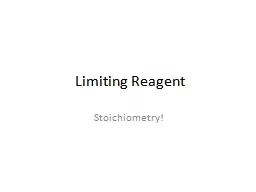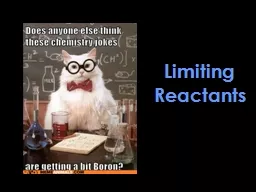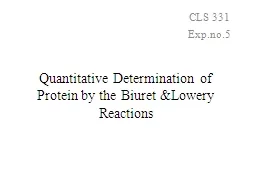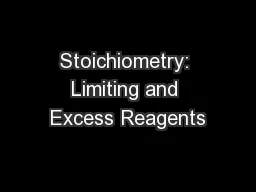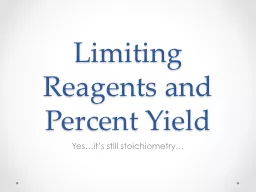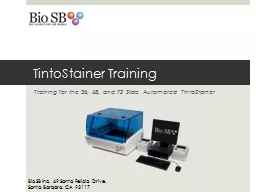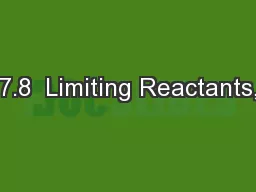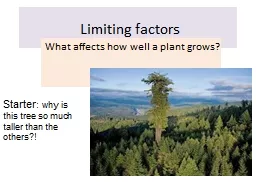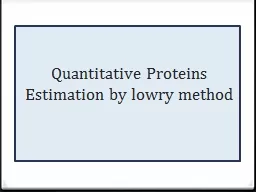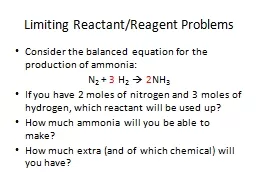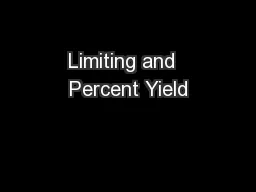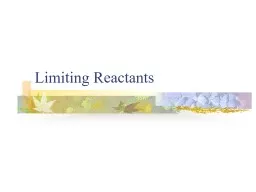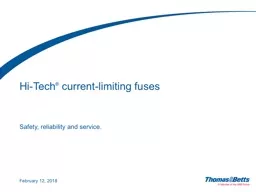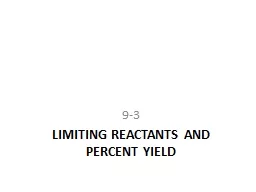PPT-Limiting Reagent
Author : sherrill-nordquist | Published Date : 2016-06-28
Stoichiometry So far In all our reactions we assume both reactants get used up We assume both reactants provided are pure We rarely see these two Limiting reagents
Presentation Embed Code
Download Presentation
Download Presentation The PPT/PDF document "Limiting Reagent" is the property of its rightful owner. Permission is granted to download and print the materials on this website for personal, non-commercial use only, and to display it on your personal computer provided you do not modify the materials and that you retain all copyright notices contained in the materials. By downloading content from our website, you accept the terms of this agreement.
Limiting Reagent: Transcript
Download Rules Of Document
"Limiting Reagent"The content belongs to its owner. You may download and print it for personal use, without modification, and keep all copyright notices. By downloading, you agree to these terms.
Related Documents

